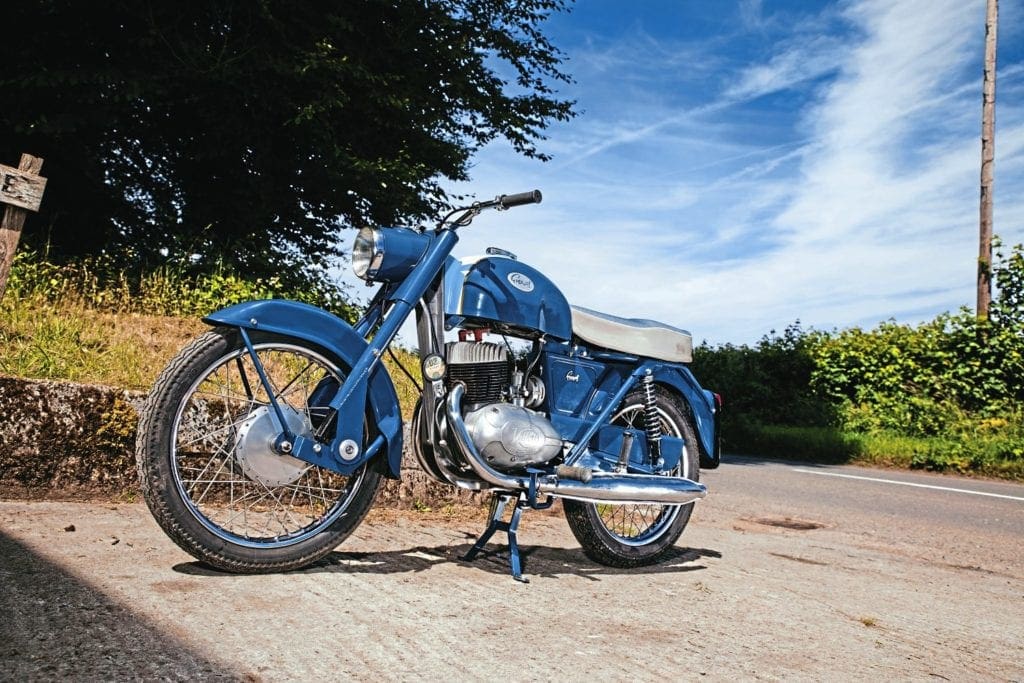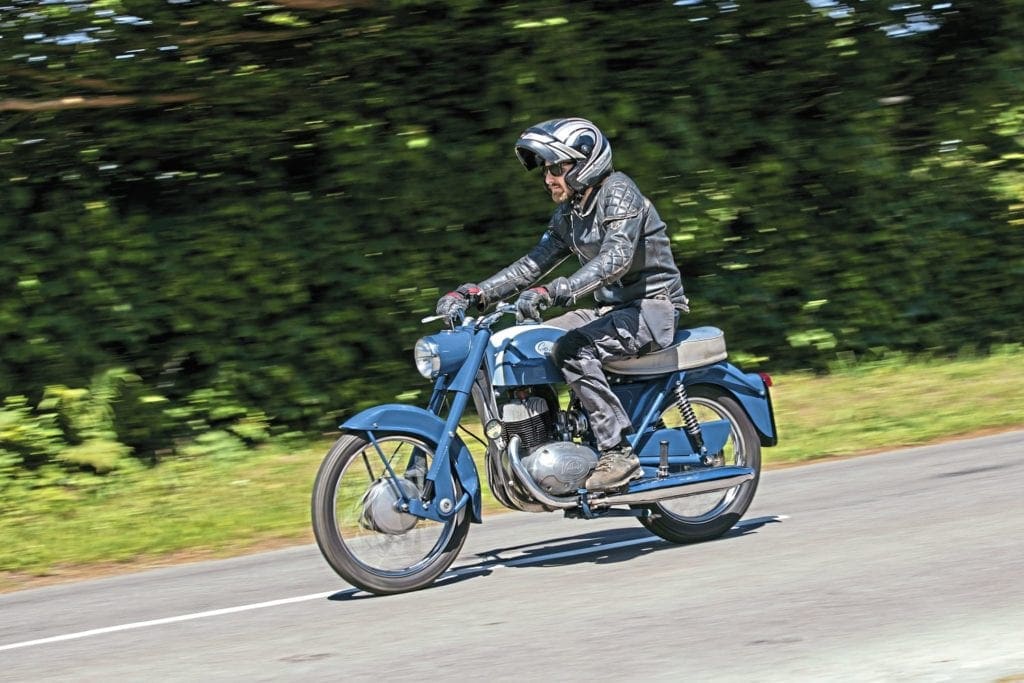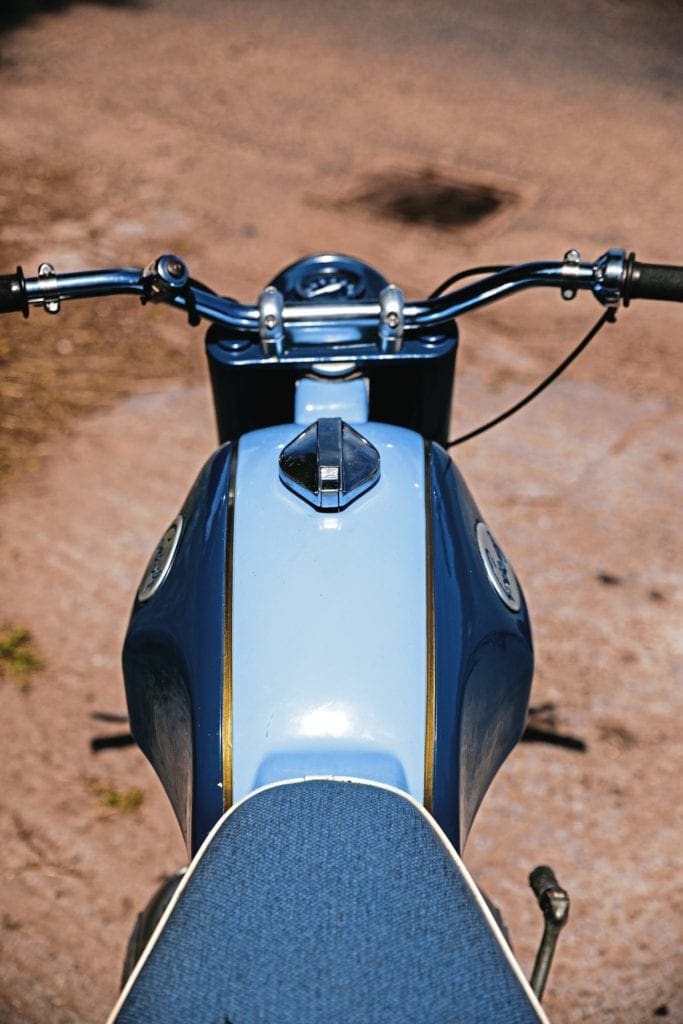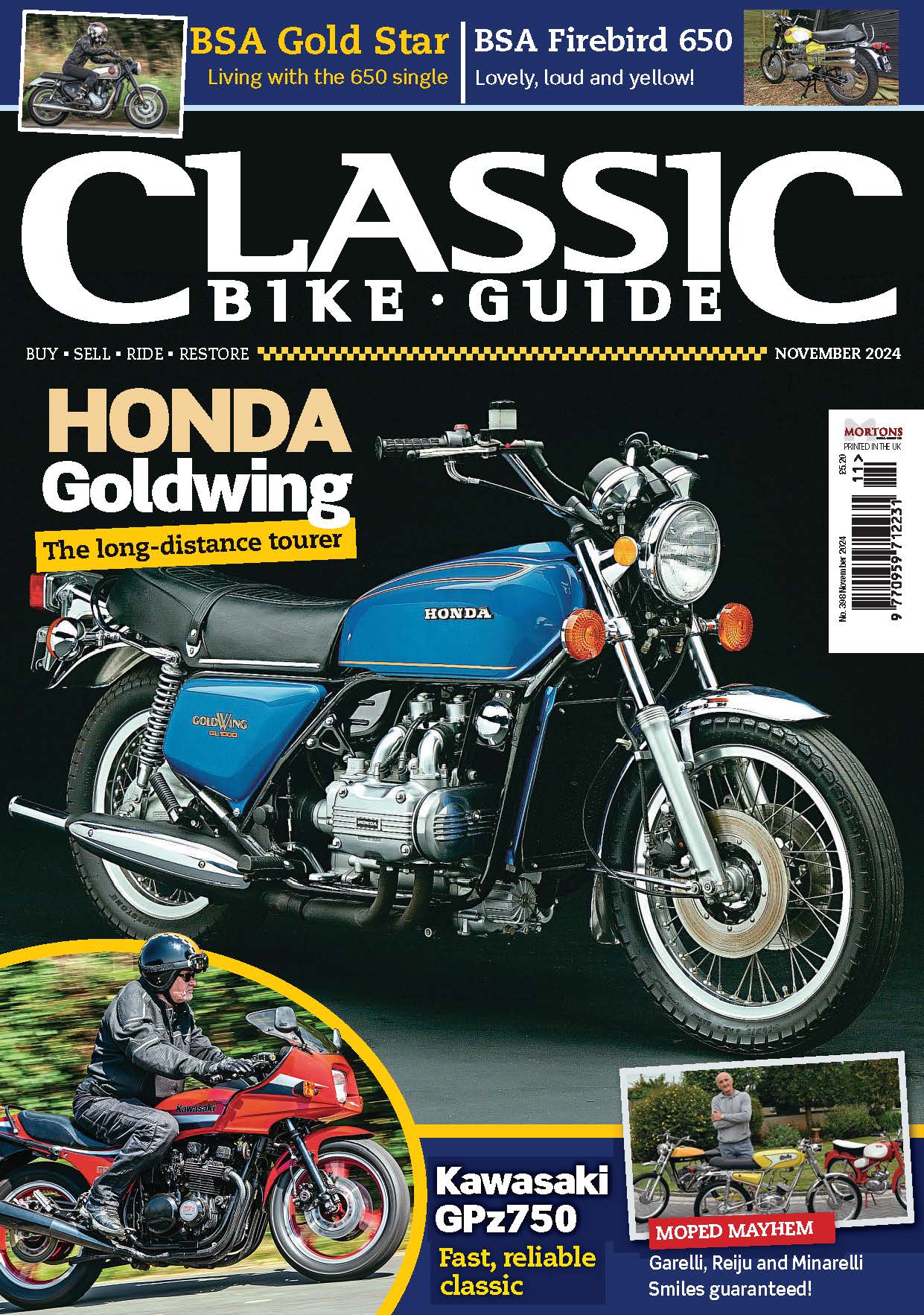From the company that gave us the Invacar and the county that ‘delights’ us with its own reality TV show… welcome to a twin cylinder two-stroke.

Although best known for building competitive off-roaders, Greeves had twin-cylinder, two-stroke road bikes in its catalogue from the moment bikes started rolling from the firm’s Essex production lines in 1954.
The company took its name from inspired engineer Bert Greeves and the backbone of the business, which was run as a partnership with his cousin Derry Preston-Cobb, was the government-financed Invacar invalid carriage. This was a small, light blue, single seater tricycle, which was ordered by the government to provide transport for people with disabilities – many of whom had lost limbs during the Second World War. The Invacar design made use of small two-stroke Villiers engines, rubber bush suspension and glass fibre bodywork.
Producing tens of thousands of Invacars gave Greeves a strong company base and the workforce skills that could be used in motorcycle manufacturing. Bert Greeves was already an enthusiastic motorcyclist and talented scrambles rider and the company produced its first prototype motocrosser in 1954. Look at footage of scrambles competition from the 1950s and 60s, and you’ll see most of the grid will be made up of Greeves ‘crossers. Production versions of the off-road machine and a roadster appeared later in 1954 and Greeves road racers mirrored the success of the scramblers, something that was largely down to the quality of the handling and the lightness of the machines.

Using two-stroke engines and leading link front suspension based on the invalid cars’ rubber units, the Greeves frames eschewed the normal tubular front section and used a single, enormously strong aluminium alloy H-section beam, produced in Greeves’ own forge. The company’s glass fibre moulding skills were utilised for the bodywork. Although unconventional to look at, Greeves bikes offered excellent handling for a lightweight, on or off the road.
At first the road bikes were fitted with British Anzani 242cc and 322cc engines, which were more commonly seen powering speedboats. With British Anzani production starting to wobble in 1956, Greeves looked around for an alternative, and like so many small-scale motorcycle makers decided to source them from Villiers, choosing the 2T twin for the roadsters. Although Villiers is best known for workmanlike and unexciting small singles, the twins were a different kettle of fish.
The engines were not particularly powerful but managed to be both revvy and torquey and were easily able to outperform the 250 four-stroke singles of the era. It was only when the Japanese got their act together to make more sophisticated offerings that the Villiers-powered machines appeared dated by comparison. The 2T had a bore and stroke of 50mm x 63.5mm giving 249cc. Each barrel had its own crankshaft, separated by a central disc in the crankcase holding a central bearing.

A ‘labyrinth’ seal kept the gas circulating. There was a roller bearing on the magneto side and a ball bearing on the sprocket side. The small ends were steel backed brass bushes and alloy heads were fitted to the cast iron cylinders. The compression ratio was 8.2:1 and a choice of standard or wide ratio boxes with four speeds was offered.
The 2T engine powered the 25D Fleetwind twin, the subsequent 25DB Sports Twin, the 25DCX and the first 25DD Essex Twin. This was replaced by the 4T engine for the Essex Twin Mk.II. The 4T engine had larger, squarer-finned barrels, having been designed for use in microcars from the likes of Bond that needed extra cooling, as the engines on these machines were enclosed.
The market for the microcar was all but destroyed by the advent of the Mini and by cheaper European rivals which left Villiers with a lot of 4T engines, so it stopped making the 2T in favour of selling the 4T. This engine was very similar to the 2T, also of 249cc capacity but was given a higher compression ratio of 8.75:1 as against the 8.2:1 of the earlier units. They were recorded as producing over 17bhp at 6000rpm. The 4T used a Villiers flywheel magneto and engines were fitted with a Villiers carb.
Want to read more? Then you can get hold of our October 2018 edition of Classic Bike Guide here to get the rest!




